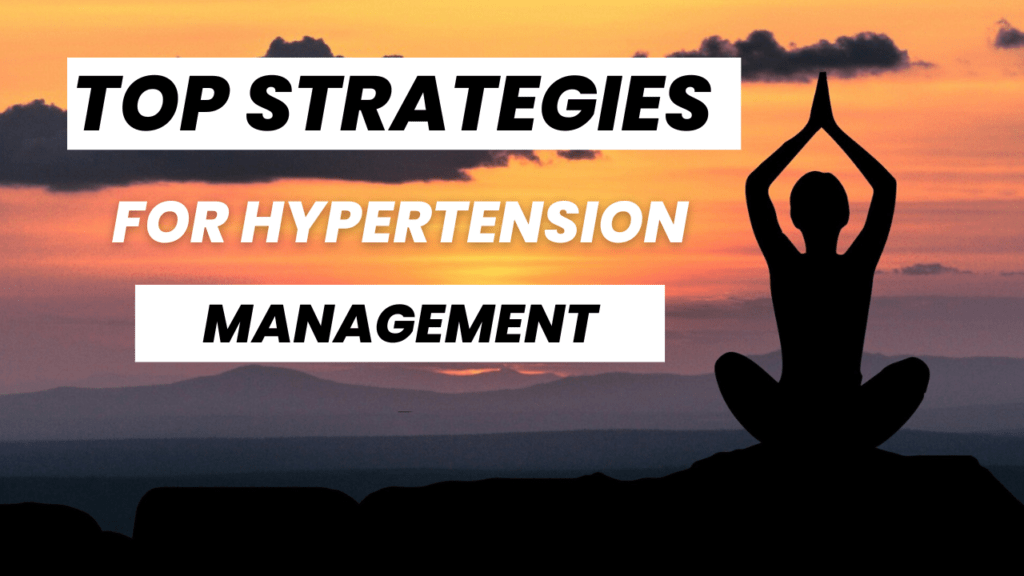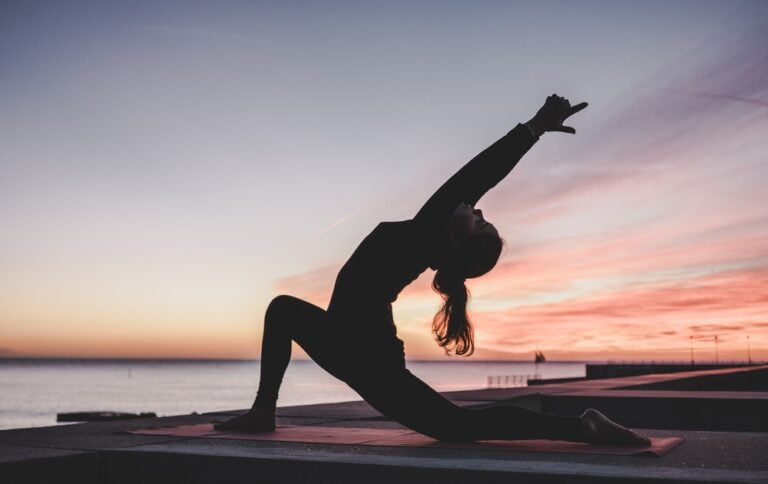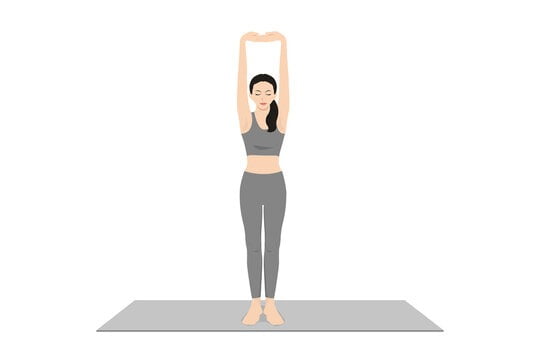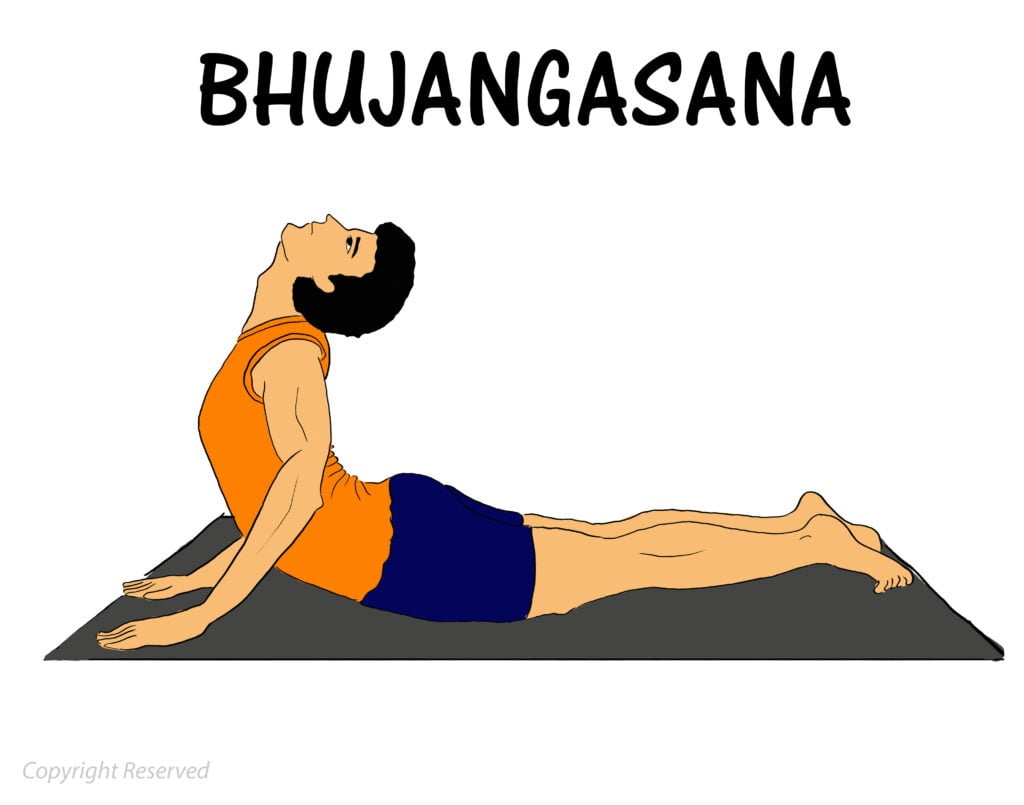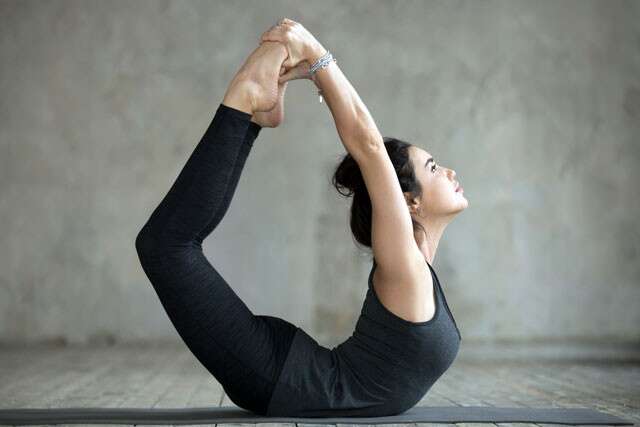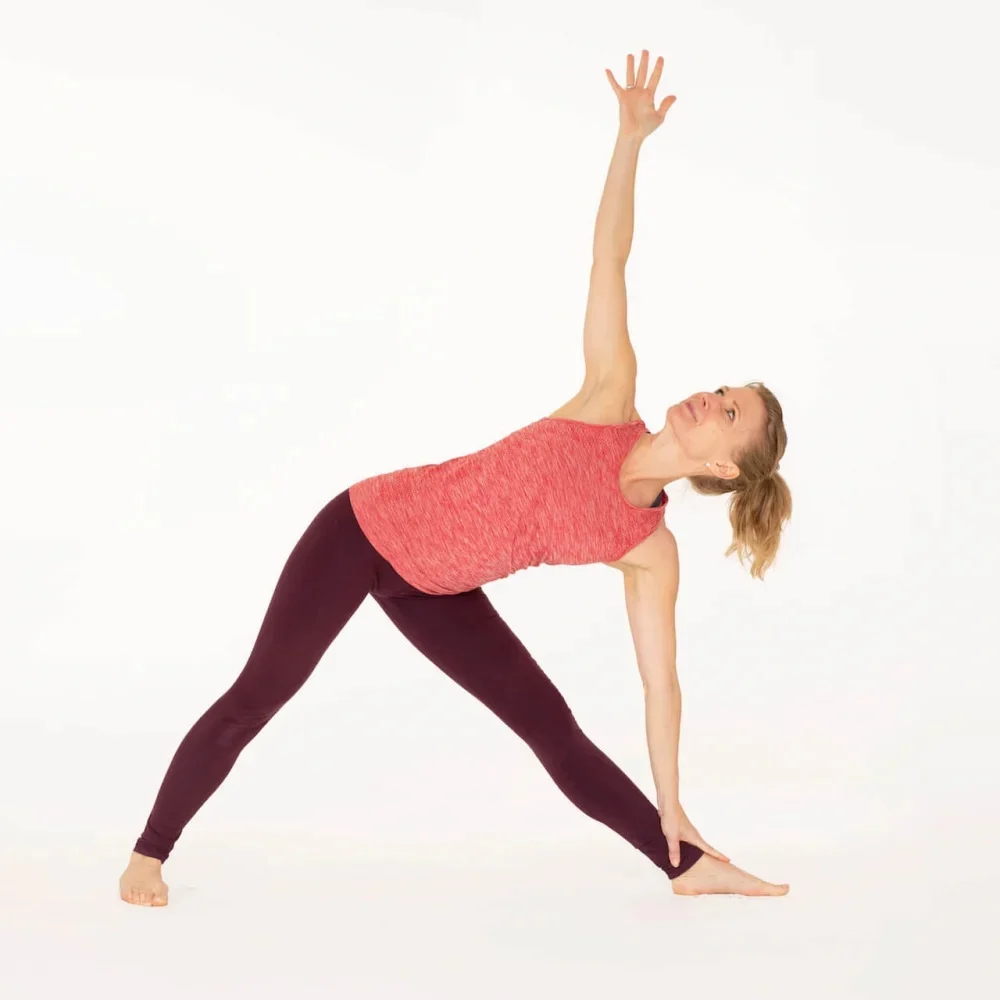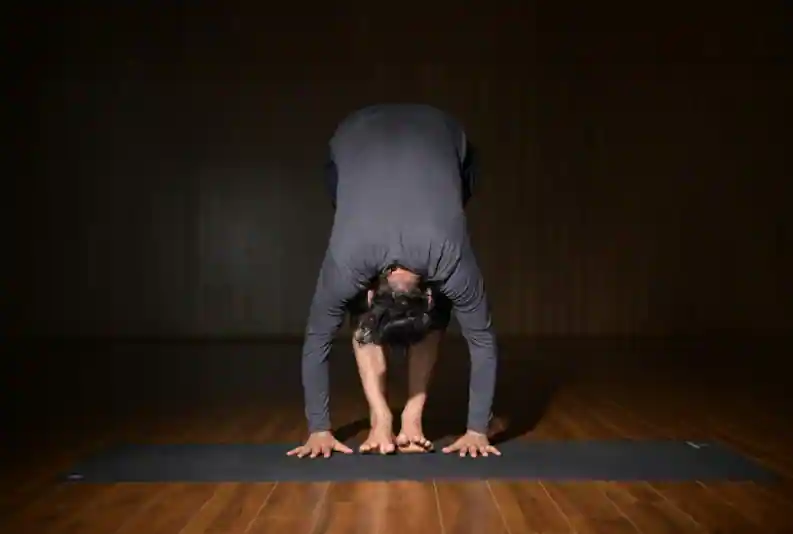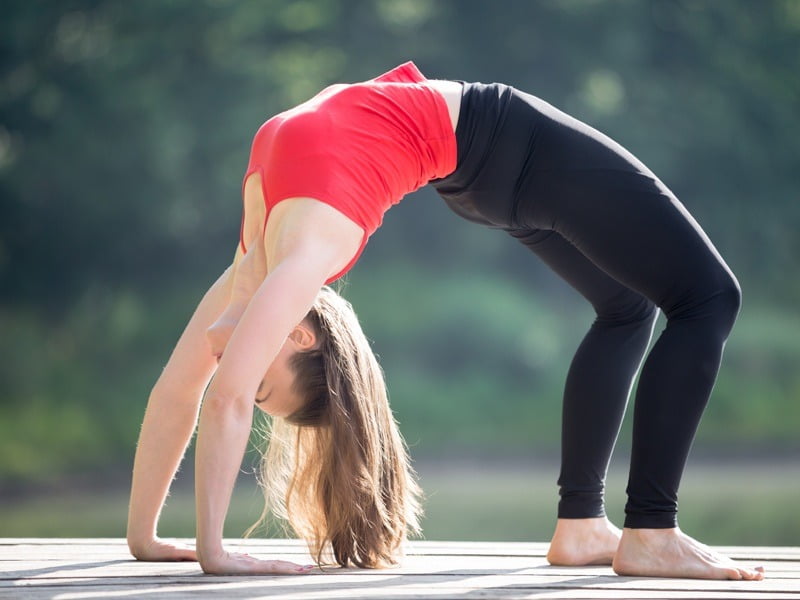Hypertension is commonly known as high blood stress. Hypertension refers to the presence of abnormally high blood pressure measurements continuously and repeatedly. Blood pressure is the force exerted by the blood against the walls of the blood vessels as it circulates through the body. Hypertension is diagnosed when blood pressure consistently exceeds the normal range. The normal blood pressure range for adults is typically considered to be around 120/80 millimetres of mercury (mmHg). Yoga can help reduce stress, improve circulation and promote relaxation.
There are several yoga asanas (poses) that have been suggested to help manage hypertension. Here are a few examples:
Savasana (Corpse Pose):
This pose promotes relaxation and deep breathing, helping to reduce stress and lower blood pressure. The length of time to hold Savasana, also known as the corpse pose, varies depending on the individual and the class. Typically, Savasana is held for 5-10 minutes at the end of a yoga practice as a way to relax and integrate the benefits of the preceding poses.

Sukhasana (Easy Pose):
Sitting cross-legged with a straight spine and focusing on deep, slow breathing can help calm the mind and relax the body, aiding in hypertension management. According to some spiritual persons, it helps us to be in touch with the divine name even when one is in deep slumber. It helps to eradicate negative energies and thoughts.
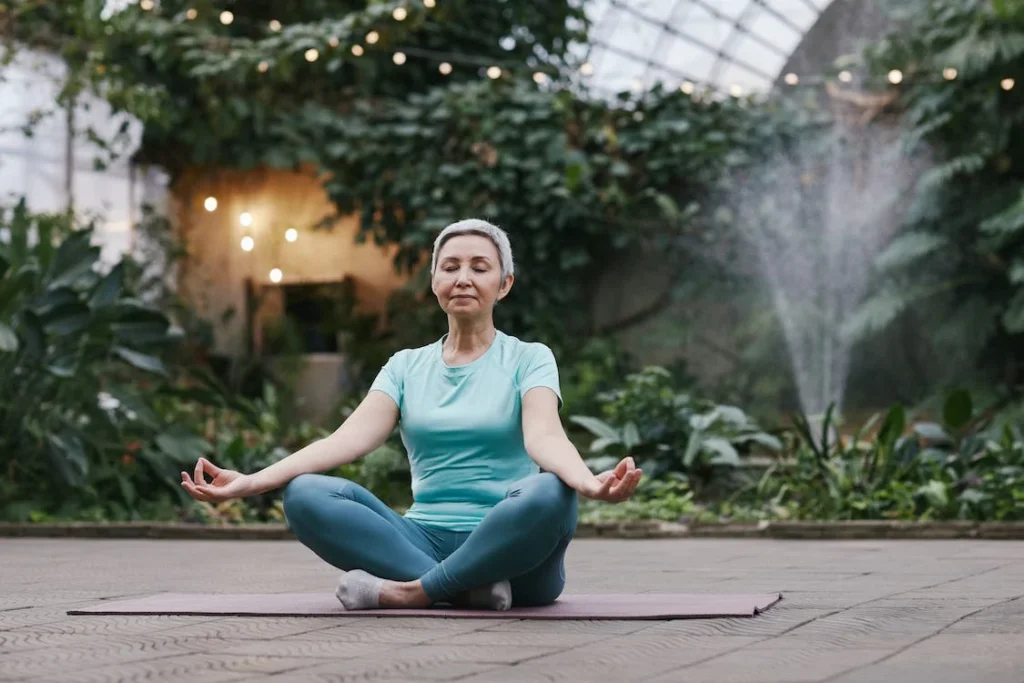
Viparita Karani (Legs-Up-the-Wall Pose):
This gentle inversion pose allows blood to flow towards the head, relieving stress and promoting relaxation. If you have high blood pressure, not long. If you are healthy then as long as it feels comfortable. There should not be a timer set for yoga exercises. Rather, focus on breathing slowly and deeply and enjoy the pose.
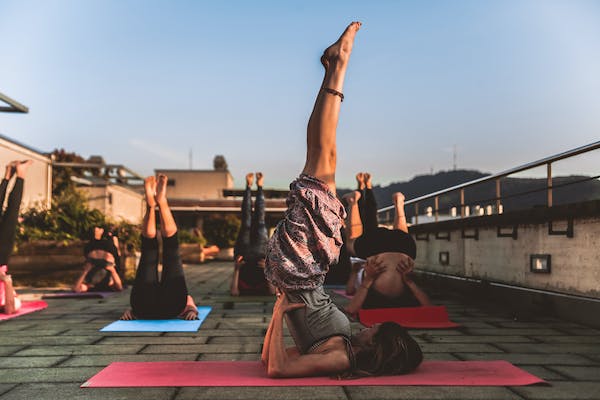
Bhujangasana (Cobra Pose):
This backbend stretches the chest and opens up the heart, improving circulation and potentially lowering blood pressure.
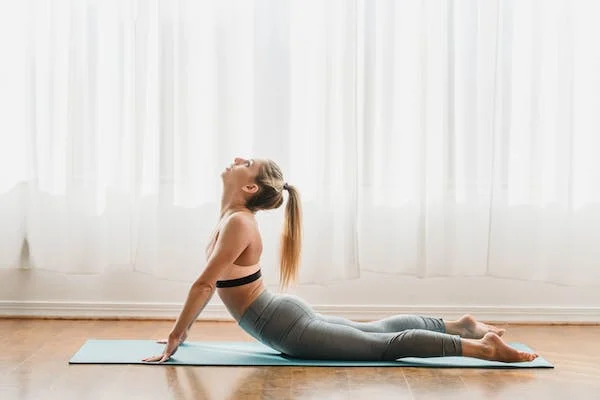
Bhujangasana, or Cobra Pose, has several potential benefits, including:
- Strengthening the spine, shoulders, and arms.
- Stretching the chest, lungs, shoulders, and abdomen.
- Stimulating the digestive organs and improving digestion.
- Relieving stress and fatigue.
- Opening the heart and increasing feelings of happiness.
- Improving flexibility and mobility of the spine.
Paschimottanasana (Seated Forward Bend):
This seated forward fold stretches the hamstrings and back, promoting relaxation and reducing stress levels.
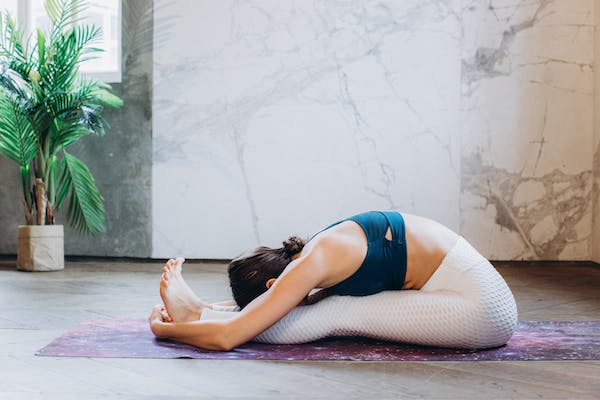
Anulom Vilom Pranayama (Alternate Nostril Breathing):
This breathing technique involves inhaling through one nostril and exhaling through the other, which has a calming effect on the nervous system and can help regulate blood pressure.
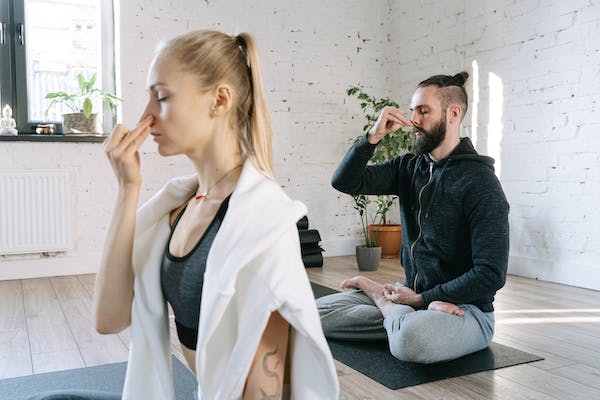
Remember that yoga should be practised mindfully and with proper guidance. It’s crucial to listen to your body and modify poses as needed. If you have hypertension or any other medical condition, it’s advisable to seek advice from a qualified yoga instructor or healthcare professional to tailor the practice to your specific needs.
What is Mediation?
Meditation is not a ‘verb’. It is a noun. You do not meditate, it comes upon you like sleep or hunger. You might try to sleep but not actually be able to do so. Exactly like that, whenever you are ‘trying’ to meditate you aren’t really doing it. It is a state which occurs to you. Integrating meditation into your yoga practice can improve its benefits and provide a deeper sense of relaxation and internal stability.
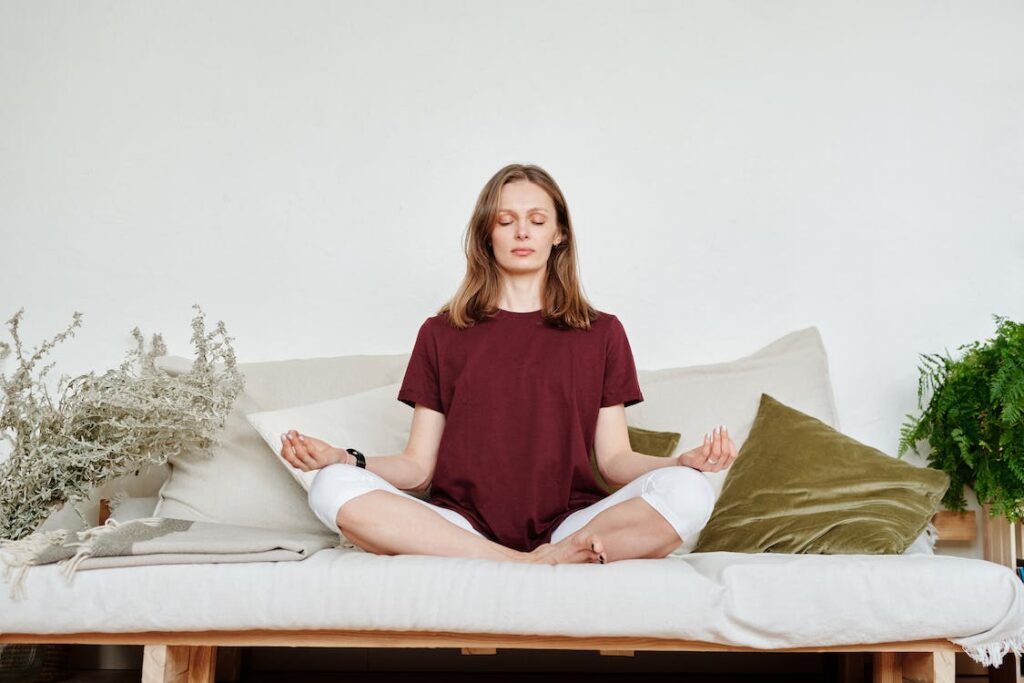
Here are some tips to help you integrate meditation into your yoga routine:
Set aside dedicated time: Allocate a specific time for meditation within your yoga practice. It can be at the beginning or end of your session, or even as a separate practice altogether.
Create a conducive environment: Find a quiet and peaceful space where you can meditate without distractions. Minimize external noise, dim the lights, and create a serene atmosphere that supports your inward focus.
Establish a comfortable posture: Sit in a comfortable position that allows you to remain alert yet relaxed. You can choose to sit cross-legged on a cushion, use a meditation bench, or even sit on a chair with your feet firmly grounded. Maintain an upright posture to support deep breathing and mental clarity.
Focus on your breath: Use your breath as an anchor for your meditation practice. Observe the natural flow of your breath, feeling the sensation of each inhale and exhale. If your mind wanders, gently bring your attention back to the breath, cultivating a sense of presence and mindfulness.
Choose a meditation technique: There are several meditation techniques you can explore, such as focused attention, loving-kindness (metta), or mindfulness meditation. Guided meditations or using meditation apps can also be helpful for beginners.
Start with shorter durations: If you’re new to meditation, begin with shorter sessions, such as 5 to 10 minutes, and gradually increase the duration as you build your practice. Consistency is more important than duration, so aim for regular practice rather than long sessions.
Be gentle with yourself: Meditation is a practice of non-judgment and self-compassion. Be patient with yourself and embrace any thoughts or emotions that arise during your practice.
